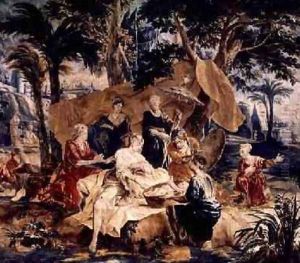Orley, J. van & Coppens, A.A Paintings
The request for a biography on Orley, J. van & Coppens, A.A appears to reference two distinct historical figures related to the art world, rather than a single artist. Due to the nature of the inquiry, individual biographies for Bernard van Orley and A.A Coppens will be provided to best address the query.
Bernard van Orley was a pivotal figure in the Northern Renaissance, known for his contributions to painting and tapestry design. Born around 1488 in Brussels, which was then part of the Habsburg Netherlands, van Orley played a significant role in the transition from the late Gothic style to the Renaissance in Northern Europe. He likely trained with his father, Valentin van Orley, before possibly spending time in the workshop of Raphael in Italy, which influenced his later work. Bernard van Orley's death is recorded in 1541 in Brussels.
Van Orley's oeuvre includes religious compositions, portraits, and designs for tapestries, which were highly prized during his lifetime. His work is characterized by detailed realism, vibrant colors, and a skillful incorporation of Renaissance ideals of perspective and proportion, while still retaining elements of the Gothic tradition. He became court painter to Margaret of Austria, regent of the Netherlands, in 1515 and later served Charles V, Holy Roman Emperor. Van Orley's influence extended through his workshop, which produced tapestries, altarpieces, and stained glass, contributing significantly to the spread of Renaissance styles in the North.
A.A. Coppens, on the other hand, is a less documented figure, and without specific details, it is challenging to provide a comprehensive biography. The lack of widely recognized information about A.A. Coppens suggests that this individual might either be a lesser-known artist or an academic, possibly active in a later period than Bernard van Orley, or even involved in a different field altogether. Without additional context or clarification regarding the life and work of A.A. Coppens, it is difficult to provide a detailed biography comparable to that of Bernard van Orley.
In summary, Bernard van Orley was a master of the Northern Renaissance, celebrated for his paintings and tapestry designs, who made significant contributions to the artistic landscape of the 16th century in the Netherlands. The reference to A.A. Coppens remains unclear without further information, underscoring the challenge of accurately detailing the contributions of less documented historical figures.
